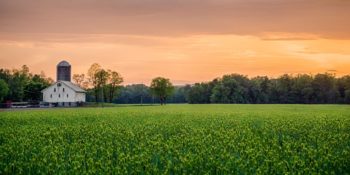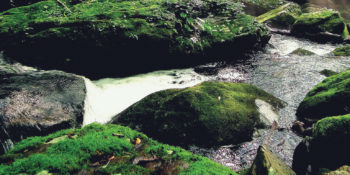Protecting our open spaces protects our future.
Berks County ROE valued at over $2.5 billion annually
Nature Is Serious Business
WHAT IS THE VALUE OF OUR CLEAN AIR, WATER, AND OPEN SPACE? WHAT HAPPENS TO OUR QUALITY OF LIFE IF WE CONTINUE TO LOSE FORESTS, STREAMS, AND WETLANDS?
Pennsylvania’s constitution imposes a duty to conserve and maintain public natural resources for this generation and generations yet to come. If the goal is to maximize health, safety, and social welfare—and to conserve and maintain public natural resources—policy processes must distinguish clear and concrete economic values from which to choose.
Not understanding the financial value of nature to the local economy may bias decisions in favor of other investments. It is essential that we recognize the importance of trees, fields, forests, and streams in filtering our water, cleaning our air, mitigating floods and stormwater runoff, pollinating plants, and providing habitats and other environmental services.
By understanding nature’s financial value, and how it is connected to our quality of life and well-being, communities are better equipped to strike an effective balance between maintaining connected, open spaces and supporting smart growth. This approach helps improve environmental quality and ensures a sustainable economy.
Berks County ROE Study

The Berks County Return on Environment Study demonstrates how open space is greatly contributing to the health of the local economy, as well as to a lower cost of living and …Read More
Swatara Creek ROE Study

Known by locals as the “Swattie,” the Swatara Creek flows from the Kittatinny Ridge for 72 miles before joining the Susquehanna River and eventually emptying into the Chesapeake Bay. A designated …Read More
Monroe County ROE Study

The rich landscapes that define Monroe County—the forests of the Kittatinny Ridge and glaciated Pocono Plateau, the natural stream corridors etched through the uplands leading to the Delaware River, along with …Read More
Franklin County ROE Study

Nature has been part of Franklin County’s heritage, culture, pride, and economy for over 300 years, and remains a major driver for tourism and economic development. Green, rolling hills and forested …Read More
Lebanon County ROE Study

The Lebanon Valley is bordered by the Kittatinny Ridge to the north and Furnace Hills to the south. Frequently described as “rural” or “open,” the county has retained much of its …Read More
Perry County ROE Study

Perry County is a region on the edge, preserving rural culture near a major metropolitan area. Across the Susquehanna River northwest of the city of Harrisburg, and north of the suburban/urban hub …Read More
Carbon County ROE Study

Carbon County is a region in transition, and nature is a competitive advantage. Just north of the Kittatinny Ridge, beyond the Lehigh Valley, lie the green hills of Carbon County. Nestled among …Read More
Dauphin County ROE Study

Dauphin County—lying at the intersection of the Susquehanna River and Kittatinny Ridge—is one of the fastest-growing counties in Pennsylvania. Newcomers and businesses are attracted to its scenic mountains, farmland, river corridors, pristine …Read More
Cumberland County ROE Study

Cumberland County has a lot worth protecting. Residents and visitors alike are attracted to Cumberland County because of its wooded hills, scenic stream corridors, agricultural landscapes, and recreational opportunities. Cumberland County has approximately …Read More